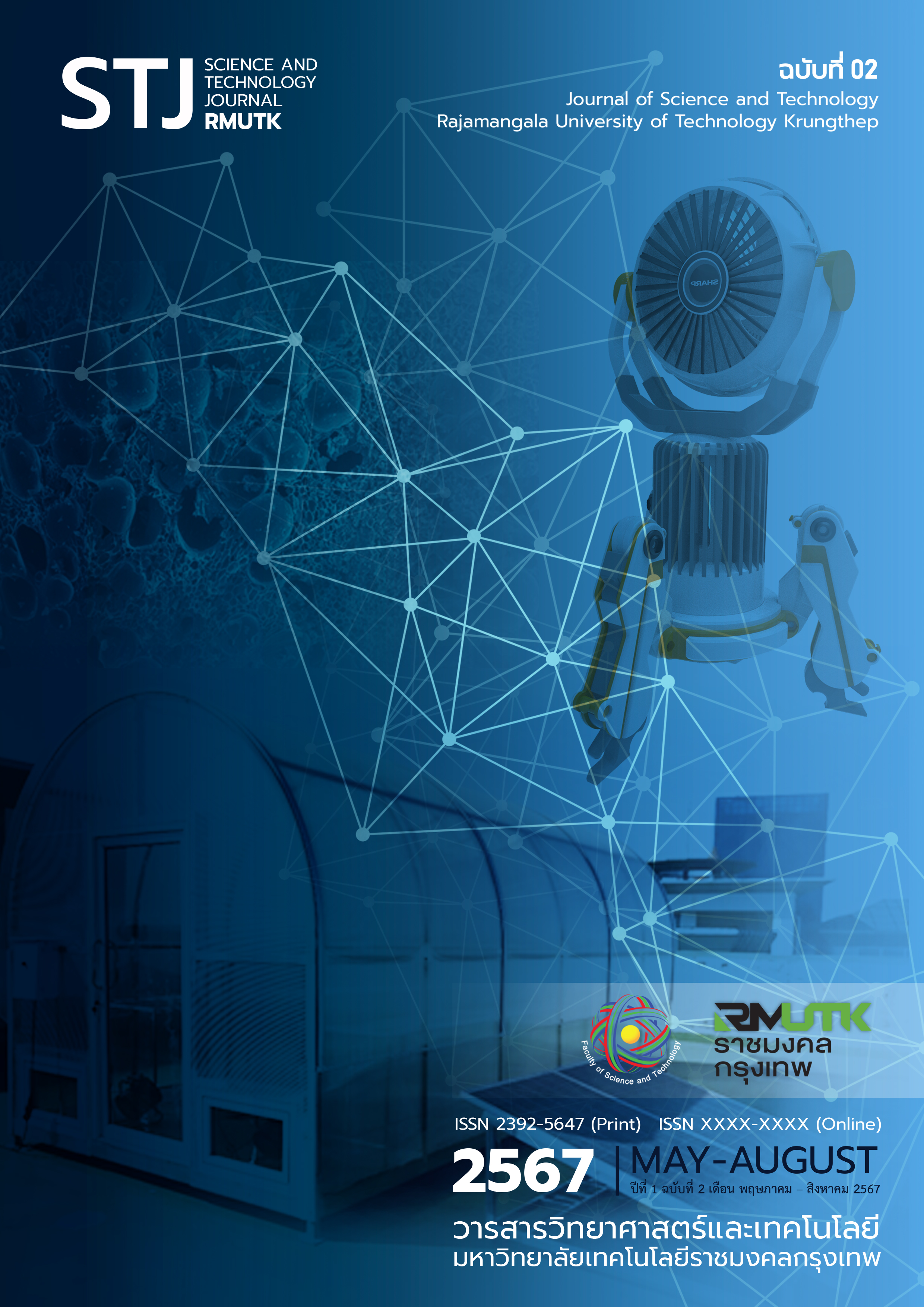Development of Herbal Infusion Produced from Wheat Bran and Tangerine Peel
Main Article Content
บทคัดย่อ
รำข้าวสาลีและเปลือกส้มเขียวหวานเป็นผลพลอยได้หรือวัสดุเหลือทิ้งและมีคุณค่าทางโภชนาการสูง จึงมีแนวคิดในการนำรำข้าวสาลีและเปลือกส้มเขียวหวานมาพัฒนาเป็นสมุนไพรชงเพื่อสุขภาพ เนื่องจากในปัจจุบันคนไทยให้ความสนใจด้านสุขภาพมากขึ้น งานวิจัยนี้มีวัตถุประสงค์เพื่อ ศึกษาอัตราส่วนรำข้าวสาลีต่อเปลือกส้มเขียวหวาน ได้แก่ 100:0, 75:25, 50:50 และ 0:100 โดยน้ำหนัก ที่มีผลต่อคุณภาพของสมุนไพรชงจากรำข้าวสาลีผสมเปลือกส้มเขียวหวาน พบว่าการเพิ่มอัตราส่วนของเปลือกส้มเขียวหวานมีผลทำให้ปริมาณความชื้น aw สารประกอบฟีนอลิกและเมลานอยดินของสมุนไพรชง สูงขึ้น โดยสมุนไพรชงที่ผลิตจากรำข้าวสาลีผสมเปลือกส้มเขียว ในอัตราส่วน 25:75 และ 0:100 มีปริมาณสารประกอบฟีนอลิกและเมลานอยดินสูงสุด อีกทั้งคะแนนความชอบด้านกลิ่น รสชาติและความชอบโดยรวมของสมุนไพรชงจากรำข้าวสาลีอบผสมเปลือกส้มเขียวหวานในอัตราส่วน 25:75 สูงสุด
Article Details

อนุญาตภายใต้เงื่อนไข Creative Commons Attribution-NonCommercial-NoDerivatives 4.0 International License.
เอกสารอ้างอิง
K. Kraboun, P. Phanumong, S. Nudang and N. Klinpikul, “Optimization of roasting temperatures on acrylamide and melanoidins contents and antioxidant properties of roasted broken-rice infusion,” Journal of Food Health and Bioenvironmental Science, vol. 15, pp. 10-18, 2022.
ประกาศกระทรวงสาธารณสุข, ประกาศกระทรวงสาธารณสุข (ฉบับที่ 426) พ.ศ. 2564 เรื่อง ชาจากพืช, 2564.
A. N. Ferronatto, R. Rossi, L. M. N. Pinto and J. Garavaglia, “Development of a freeze-dried symbiotic obtained from rice bran,” Biotechnology Reports, vol. 30, pp. e00636, 2021.
L. Chen, J. Y. Hu and S. Q. Wang, “The role of antioxidants in photoprotection: a critical review,” Journal of the American Academy of Dermatology, vol. 67, pp. 1013-1024, 2012.
K. Kraboun, K. Rojsuntornkitti, N. Jittrepotch, T. Kongbangkerd, N. Uthai and C. Pechyen, “Formation analysis of primary and secondary metabolites during angkak fermentation based on GC-TOF-MS, GC-FID, and HPLC and metabolomics analysis,” The Microbe, vol. 1, pp. 100006, 2023.
C. Pechyen, N. Uthai and K. Kraboun, “Effect of exogenous tannic acid on reduction of biogenic amines and citrinin in monascal soybean and metabolomics analysis,” Food Bioscience, vol. 59, pp. 103842, 2024.
K. Kraboun, W. Tochampa, W. Chatdamrong and T. Kongbangkerd, “Effect of monosodium glutamate and peptone on antioxidant activity of monascal waxy corn,” International Food Research Journal, vol. 20, pp. 623-631, 2013.
A. Ghasemzadeh, M.T. Karbalaii, H.Z.E. Jaafar and A. Rahmat, “Phytochemical constituents, antioxidant activity, and antiproliferative properties of black, red, and brown rice bran,” Chemistry Central Journal, vol. 12, pp. 17, 2018.
ณัฐพล ศรเดช กฤษวสันต์พงษ์ พวงขจร ธีรพล อัศวเลิศปัญญา และกิติศาสตร์ กระบวน, “การพัฒนาผลิตภัณฑ์สมุนไพรชงจากเปลือกกล้วยหอมทองผสมอังคัก,” วารสารเทคโนโลยีคหกรรมศาสตร์และนวัตกรรม, ปีที่ 2, หน้า 1-12, 2566.
V. Gökmen, T.K. Palazoglu and H.Z. Senyuva, “Relation between the acrylamide formation and time-temperature history of surface and core regions of French fries,” Journal of Food Engineering, vol. 77, pp. 972-976, 2006.

